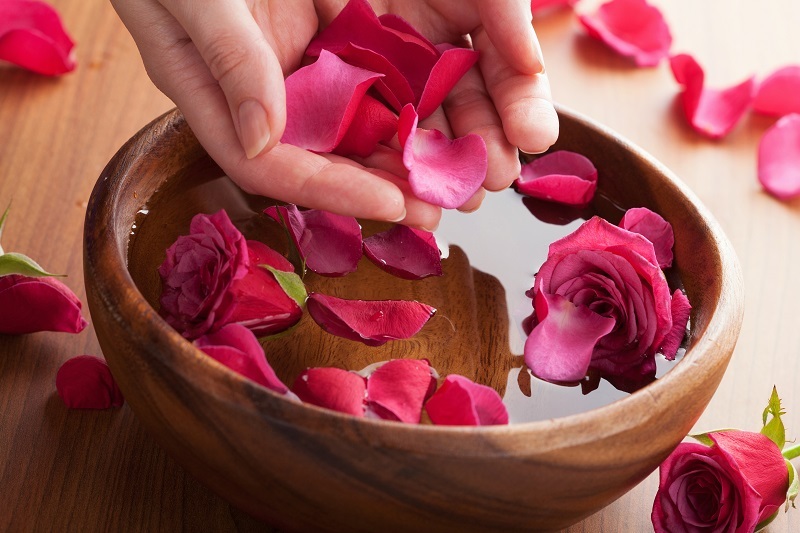Mastering the Art of Orchid Care
Posted on 20/06/2025
Orchids are celebrated across the globe for their extraordinary beauty, intriguing forms, and vibrant colors. Yet, mastering the art of orchid care can be daunting without the right knowledge. This ultimate guide will unravel the secrets behind keeping these fascinating plants thriving, whether you're a beginner or a seasoned orchid enthusiast. From the best orchid varieties to advanced tips and troubleshooting, you'll learn how to nurture your orchids to perfection.
Understanding Orchids: Nature's Exquisite Marvels
Belonging to the Orchidaceae family, orchids are among the largest and most diverse plant families on earth with over 25,000 species and 100,000 hybrids. Their elegance has made them a symbol of luxury and refinement for centuries.
- Phalaenopsis Orchids (Moth Orchids) - Easy to maintain and ideal for beginners.
- Cattleya Orchids - Renowned for their fragrant blooms.
- Dendrobium Orchids - Perfect for those seeking variation in shape and color.
- Oncidium Orchids - Also called "dancing ladies," famous for their prolific flowers.
Choosing the right orchid for your home or garden helps lay a strong foundation for successful cultivation.

Optimal Light Conditions for Healthy Orchids
One of the pivotal aspects of orchid plant care is providing the ideal lighting. Different species require varying light intensities, but most orchids thrive with indirect light.
How Much Light Do Orchids Need?
- Phalaenopsis: Medium, filtered light, avoid direct midday sun.
- Cattleya: Brighter light, can handle some direct sun in the morning or evening.
- Dendrobium: Bright but indirect light is ideal.
Tip: If the foliage is dark green, the orchid may need more light. Yellowing leaves could indicate too much exposure.
Watering Orchids the Right Way: A Fundamental Step in Orchid Care
Watering orchids can seem tricky, as overwatering is the most common killer of these beautiful plants. Orchids naturally grow on trees in their native environments, which means they're used to quick-drying roots and infrequent rainfall.
Best Practices for Watering Orchids
- Let the medium dry out slightly before watering again.
- Check roots: Healthy orchid roots are green and plump; mushy or brown roots signal overwatering.
- Use room temperature water, preferably rain or distilled water.
- Water in the morning to allow leaves and roots to dry by evening, preventing rot.
The Perfect Potting Mix for Orchids
Unlike traditional houseplants, orchids don't thrive in normal potting soil. The best orchid care tips include using a special orchid mix that encourages aeration and proper drainage.
- Pine bark
- Sphagnum moss
- Perlite
- Coconut husk
- Charcoal
Repot your orchid every 1-2 years or if the potting medium deteriorates. This prevents disease and facilitates healthy root growth.
Maintaining Humidity and Airflow for Thriving Orchids
Orchids require adequate humidity and good air movement for optimal health. Most orchids flourish in environments with 40-70% humidity.
Practical Ways to Increase Humidity
- Use a humidity tray filled with water and pebbles, placing your orchid above the waterline.
- Group plants together to naturally raise humidity levels.
- Mist leaves lightly, but avoid direct spraying on flowers and the crown.
Inadequate airflow can lead to fungal issues, so use a small fan if growing indoors, especially in humid environments.
Fertilizing Orchids for Vigorous Growth
Fertilization is a key element in successful orchid cultivation. Orchids have unique nutritional needs compared to traditional houseplants. Applying fertilizer in the right dosage and frequency encourages profuse blooming and robust foliage.
Choosing and Applying Orchid Fertilizer
- Balanced Orchid Fertilizer (20-20-20 NPK) is suitable for most orchids.
- Fertilize every 2-4 weeks, but at half the recommended strength.
- Flush with clear water monthly to remove salt build-up.
- During active growth, increase fertilization frequency slightly, but reduce during dormancy.
Remember: Over-fertilization can burn roots and inhibit flowering. The adage "weakly, weekly" is a great guideline for orchid feeding.
Understanding Orchid Bloom Cycles and Reblooming Techniques
One of the most rewarding aspects of orchid care at home is witnessing their exotic flowers burst into bloom. Some orchids provide blooms lasting for weeks or even months.
Triggers for Orchid Reblooming
- Temperature: Many species require a slight drop in nighttime temperature to initiate flower spikes.
- Proper light: Sufficient winter light is often crucial for reblooming.
- Feeding: A well-timed fertilizer with higher phosphorus content (such as "bloom booster" formulas) can promote bud formation.
After blooming, trim the flower spike just above a node for varieties like Phalaenopsis to encourage a potential rebloom, or remove spent spikes completely if no further growth is expected.
Common Orchid Problems and Solutions
Even with meticulous care, orchids may face occasional challenges. Rapidly addressing symptoms ensures that your plants remain healthy and stunning.
Frequent Orchid Issues:
- Root rot: Usually caused by overwatering. Always check that your pots drain freely.
- Leaf yellowing: May be due to old foliage, excess light, or fertilizer burn.
- Pest infestations: Orchids can attract common pests such as spider mites, aphids, and scale. Use insecticidal soap or neem oil for control and regularly inspect your plants.
- Lack of blooms: Ensure your orchid receives appropriate light, and respect resting periods between bloom cycles.
Essential Orchid Care Tools
Equipping yourself with basic tools enhances the efficiency and enjoyment of orchid care. Keep these items handy for smooth orchid maintenance:
- Sterilized scissors or pruners for cutting spikes and roots
- Clear orchid pots with drainage holes for root monitoring
- Squeeze bottles or watering cans with narrow spouts
- Hygrometers to monitor humidity
- Orchid stakes and clips to support flower stems
Frequently Asked Questions About Orchid Care
How often should I water my orchid?
It depends on the species, potting mix, and environment. Typically, water once a week, and always let the medium dry between watering. Check root color and turgor as a guide.
Why are my orchid leaves wrinkled?
This may signal root damage or under-watering. Inspect the roots and adjust your watering technique as needed.
Do orchids need special light?
Yes, most orchids prefer indirect, bright light. Avoid exposure to harsh midday sunlight to prevent leaf burn.
Is it necessary to fertilize orchids?
Yes, proper fertilization is vital for healthy blooms and robust growth. Use diluted, balanced orchid fertilizer regularly, and flush with water monthly.
Can orchids be grown outdoors?
Certain orchid species (like some Cymbidiums) can thrive outdoors in mild climates, provided they avoid direct midday sun and are protected from frost.
Advanced Orchid Care Tips
If you are ready to elevate your proficiency in the art of orchid growing, consider these expert strategies:
- Double-potting: Place the orchid's growing pot inside a decorative container to stabilize temperature and humidity.
- Seasonal rest: Honor species-specific rest periods, during which you water and feed less.
- Propagation: Experienced growers can divide mature plants or propagate via keikis (baby plants) for new specimens.
- Hybridization: For advanced hobbyists, cross-breeding orchids can produce unique, personalized blooms.

The Joy of Mastering Orchid Cultivation
Becoming proficient in orchid plant care is a truly rewarding journey. These plants not only expand your gardening skills but also bring a touch of exotic beauty to any space. By mastering core principles--light, water, humidity, nutrition, and patience--you'll find your orchids blooming vibrantly and continuously. Embrace the learning curve, enjoy every stage of growth, and share your passion with fellow orchid lovers!
Conclusion: Nurturing Orchids for a Lifetime of Beauty
The art of orchid care combines science, sensitive attention, and experimentation. With this comprehensive guide, you'll be well equipped to grow thriving, beautiful orchids that grace your home for years to come. Whether you care for a single Phalaenopsis or curate a diverse collection, your patience and nurturing will be rewarded tenfold with every spectacular bloom.
Start your journey today and flourish as an orchid aficionado!
Latest Posts
The Significance of Red Roses on Valentine's Day
Top Blooms to Brighten a Birthday
Discover the Top 5 Flowers to Gift This Valentine's Day
Discover Which Flower Embodies Your Unique Personality
Discover Your Birth Flower and Uncover What It Reveals About You







